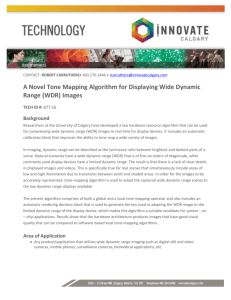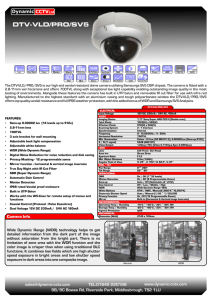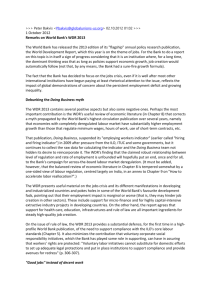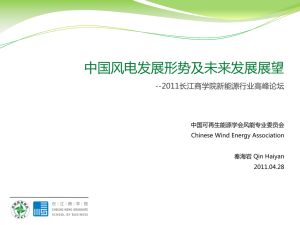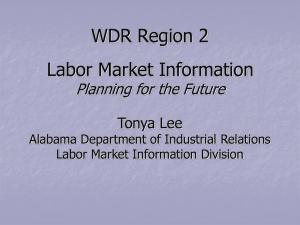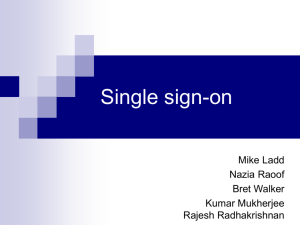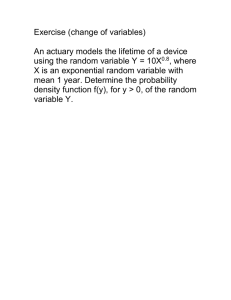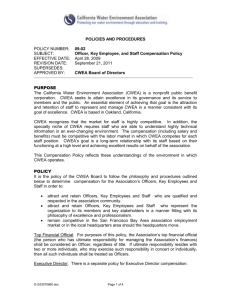Spill Estimation-Upstream Connections
advertisement
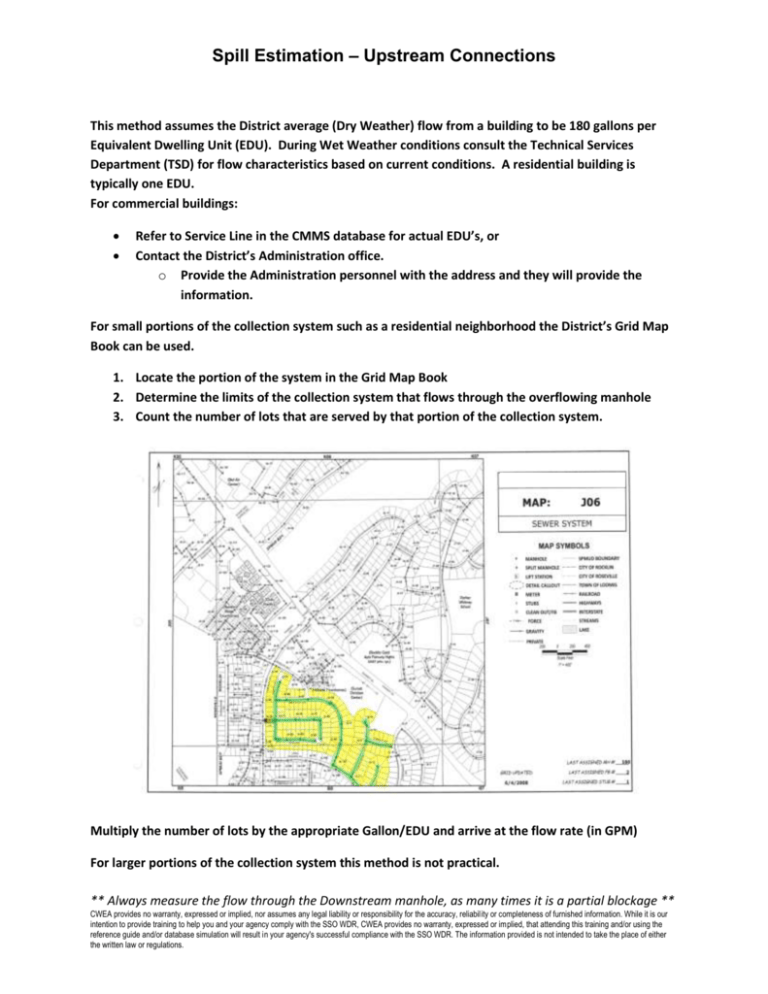
Spill Estimation – Upstream Connections This method assumes the District average (Dry Weather) flow from a building to be 180 gallons per Equivalent Dwelling Unit (EDU). During Wet Weather conditions consult the Technical Services Department (TSD) for flow characteristics based on current conditions. A residential building is typically one EDU. For commercial buildings: Refer to Service Line in the CMMS database for actual EDU’s, or Contact the District’s Administration office. o Provide the Administration personnel with the address and they will provide the information. For small portions of the collection system such as a residential neighborhood the District’s Grid Map Book can be used. 1. Locate the portion of the system in the Grid Map Book 2. Determine the limits of the collection system that flows through the overflowing manhole 3. Count the number of lots that are served by that portion of the collection system. Multiply the number of lots by the appropriate Gallon/EDU and arrive at the flow rate (in GPM) For larger portions of the collection system this method is not practical. ** Always measure the flow through the Downstream manhole, as many times it is a partial blockage ** CWEA provides no warranty, expressed or implied, nor assumes any legal liability or responsibility for the accuracy, reliability or completeness of furnished information. While it is our intention to provide training to help you and your agency comply with the SSO WDR, CWEA provides no warranty, expressed or implied, that attending this training and/or using the reference guide and/or database simulation will result in your agency's successful compliance with the SSO WDR. The information provided is not intended to take the place of either the written law or regulations. Spill Estimation – Upstream Connections Extract MH_List Button Report Button ** Always measure the flow through the Downstream manhole, as many times it is a partial blockage ** CWEA provides no warranty, expressed or implied, nor assumes any legal liability or responsibility for the accuracy, reliability or completeness of furnished information. While it is our intention to provide training to help you and your agency comply with the SSO WDR, CWEA provides no warranty, expressed or implied, that attending this training and/or using the reference guide and/or database simulation will result in your agency's successful compliance with the SSO WDR. The information provided is not intended to take the place of either the written law or regulations.

